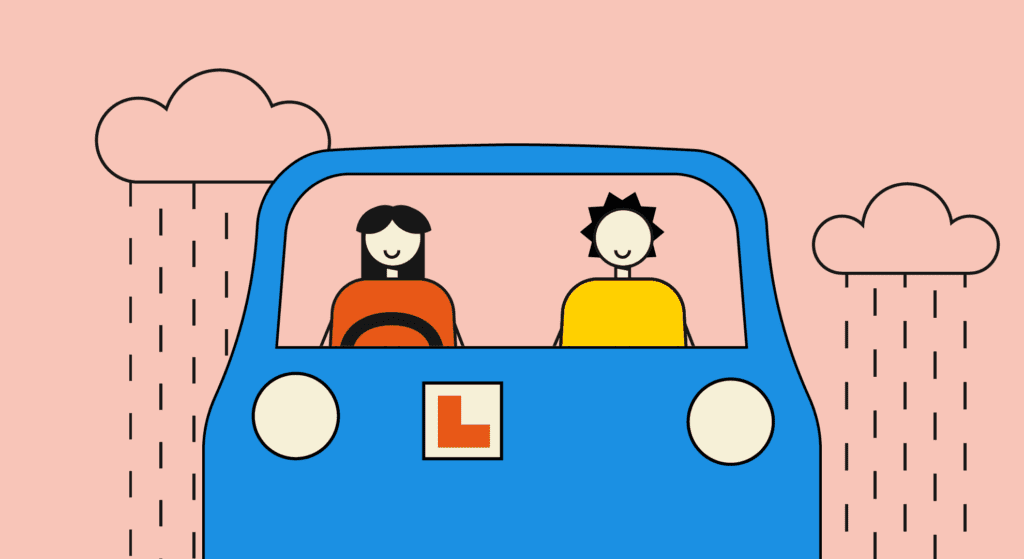When driving in the UK, it’s likely you will at some point have to drive in heavy rain and potentially floods, but how do you drive them safely? With more accidents occurring during rainy weather, it’s important that you know how to drive safely in these conditions. Here are some helpful tips to help you drive in the rain and through standing water safely.
Before you drive in the rain
Before you set out in heavy rains, consider whether your trip is necessary. Driving in wet weather usually adds time to your journey because of additional road congestion and slower speeds on the roads. It could also increase the risk of your vehicle breaking down, so, whenever possible, it’s best to avoid driving in the rain. Of course, this isn’t always possible.
If you do need to drive, make sure you leave extra time to get to your destination so you aren’t driving in a rush. This will help prevent you from getting in an accident or making dangerous decisions.
Tips for driving in the rain
1. Check your vehicle before you set off
Heavy rain reduces visibility, so it’s important to make sure that you remain as visible as possible while driving in wet weather. Make sure to check that all your lights are working before you set off. The best way to do this is to park your car and check your different lights in turn. You can either do this by asking another person to go outside the vehicle and check the lights for you, or park where you can see the vehicle’s reflection (such as in front of glass) and check the lights are working yourself.
2. Demist your windows before setting off
You might notice that the insides of your windows are foggy when the weather is bad. If this is the case, you can demist them by using your car’s air conditioning or heating function. Simply turn this on and wait until your windows are clear before setting off.
3. Turn your headlights on when you’re ready to leave
The Highway Code says you should use your headlights when visibility is seriously reduced (less than 100m). Do not use your fog lights unless it is foggy, and make sure your lights are on a dipped beam.
4. Reduce your speed
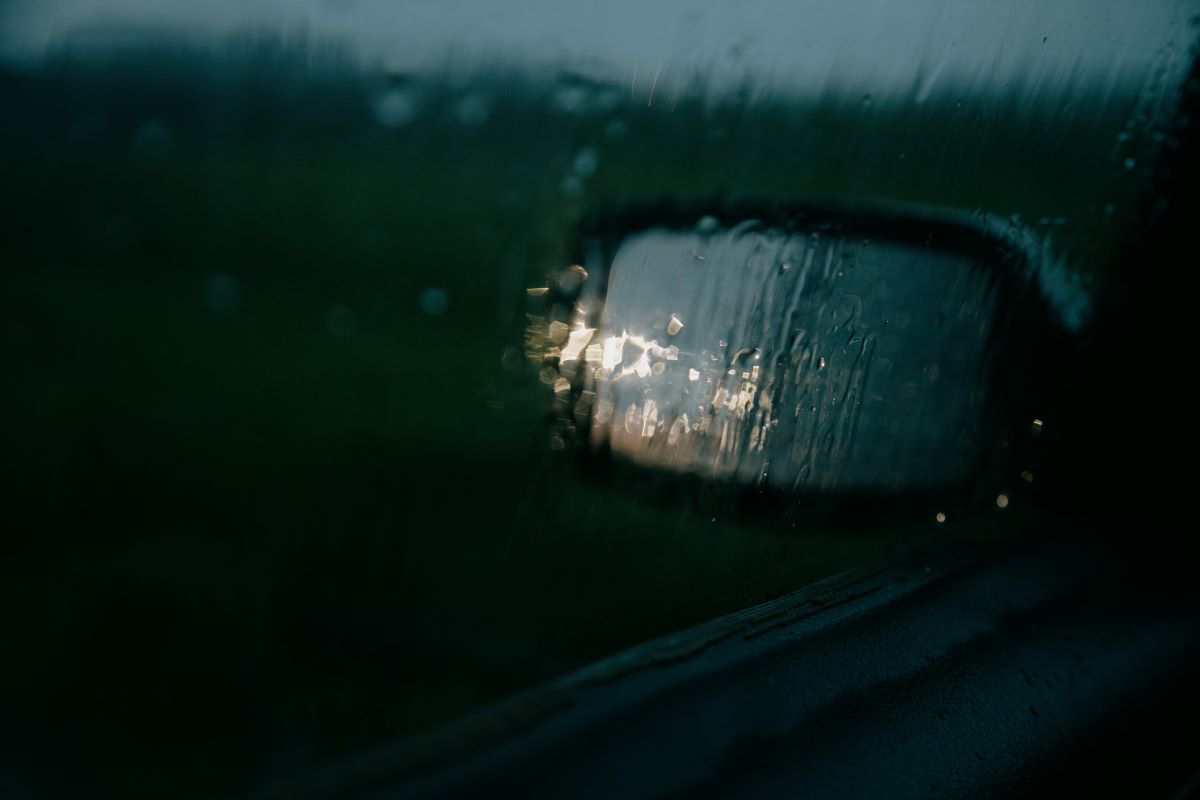
Stopping distances increase during wet weather, so it’s important to reduce your speeds during this time. You might also find that your visibility and ability to see is hindered when it’s raining too. Slowing down can help provide you with the necessary time to react to hazards.
5. Use your windscreen wipers if necessary
If the rain is heavier than a light rain, you’ll probably need to put your windscreen wipers on automatic. Choose the right setting depending on how heavy the rain is; as a general rule, the heavier the rain, the faster your windscreen wipers will need to be.
6. Keep a safe distance between you and the car in front
As stopping distances are at least double during wet weather, you’ll need to leave more room between your car and the vehicle in front so you’re able to brake when necessary. This also helps improve the visibility of the road, allowing you to plan ahead. Remember that the two second rule only applies in dry weather and is doubled in wet weather, so use the four second rule when it’s raining or the roads are wet.
7. Be careful when driving through standing water
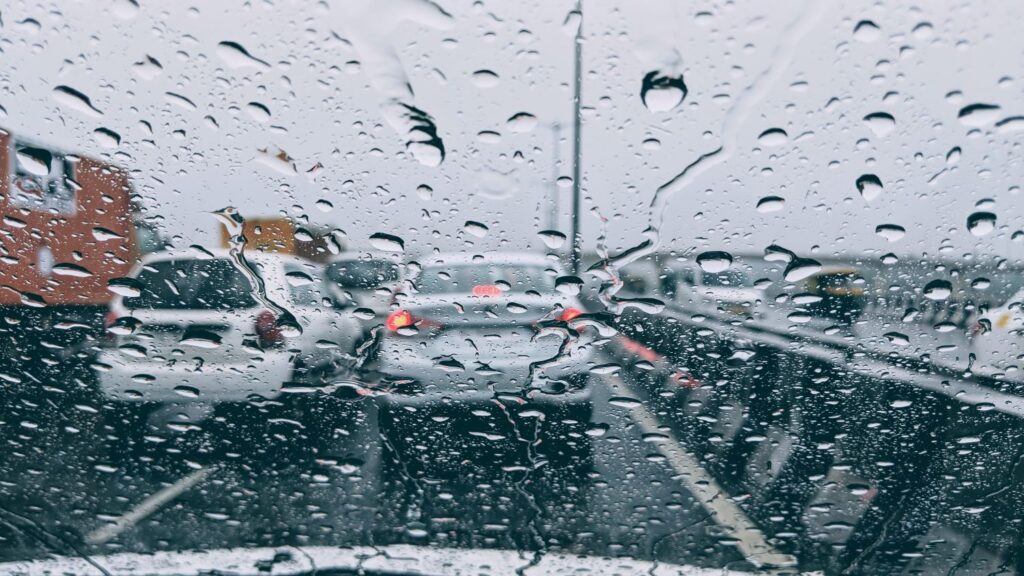
Avoid driving through deep standing water completely if possible, and even if you’re driving through relatively shallow puddles, make sure you follow our tips below to maintain control of the vehicle.
8. Be wary of large vehicles
Keep your distance from lorries and other large vehicles as they can cause spray to kick up from the ground. This can reduce your visibility. If you notice any on the roads, try to give them as much space as possible.
9. Don’t leave your bonnet propped open
Breakdowns increase in the rain and damp. If your car breaks down, don’t prop the bonnet open while you wait for help. Damp and rain-soaked electrical components can make it harder to start the engine. Thankfully, Adrian Flux are always on hand should you need breakdown insurance at short notice.
What is the stopping distance in rain?

You will need to at least double your stopping distance between you and the vehicle in front of you in the rain as tyres have less grip on the road. This means your stopping distance should be at least four seconds.
How to drive through floods safely
It’s one thing to drive safely in the rain, but it’s even harder to drive safely in a flood caused by rain or a blocked drain. If you come across standing water on your journey, it’s important that you know how to deal with this.
1. Check how deep the water is
Firstly, do you know how deep the water is? If necessary, park safely and get out of the car to check the water levels. You can use a stick or another object for this.
2. Don’t drive through the water if it’s too deep
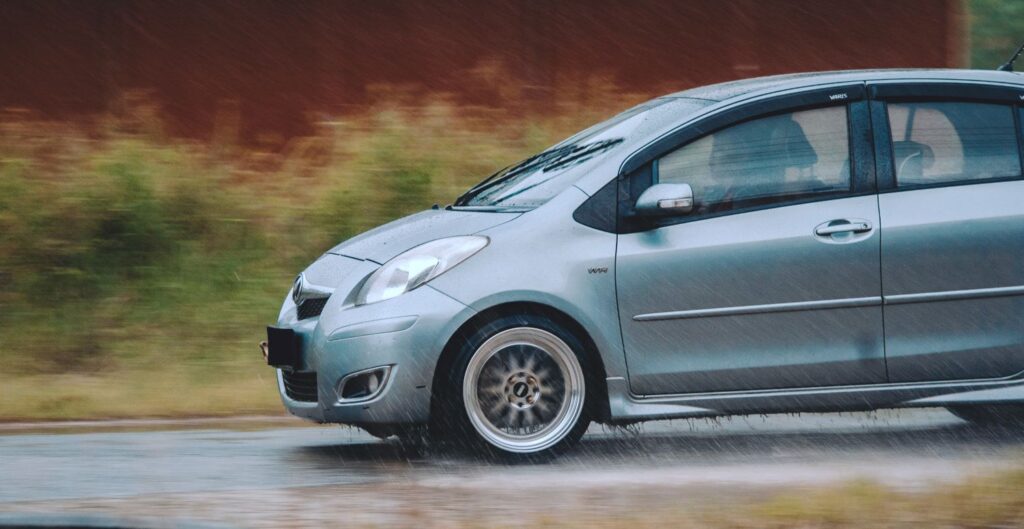
If the water comes above the front bumper, this could damage your engine and the vehicle’s electronics so it’s best to avoid driving through high water if possible. Under no circumstances should you try to manoeuvre through water around 10cm or more in depth. You should try to avoid deep standing water if you can – it is better to turn around and find an alternative route than having your engine fail in the middle of a flooded road.
3. If the water is shallow enough, drive through carefully
If the standing water is relatively shallow, get back in your car, choose a low gear, and carefully drive through the water. Driving too fast can cause your car to aquaplane, which is when you lose control of your vehicle. Signs of this include:
- your steering feeling light
- your engine becomes louder
- your car suddenly slows down
- the back of your vehicle drifts from side to side
4. Ease off the accelerator if you aquaplane
If this happens, ease off the accelerator and allow your speed to reduce until the steering normalises. It’s important that you do not use your brake during this time as this can cause further loss of control.
5. Check that your brakes still work
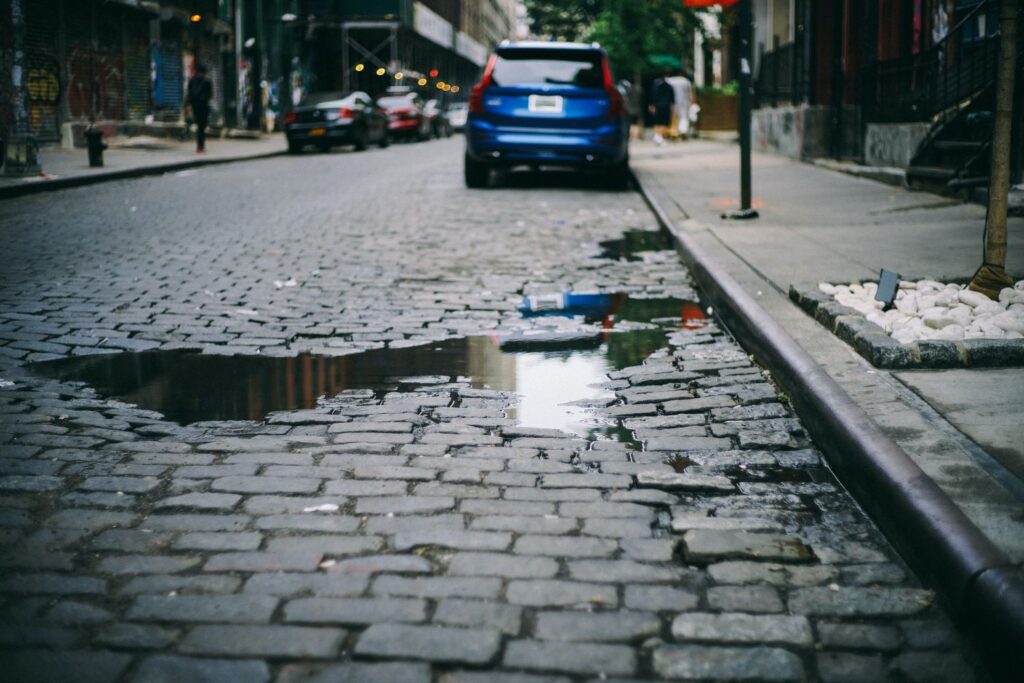
Once you’ve gone through the water, it’s a good idea to check your brakes still work. Press down on the brake pedal gently once you’re clear of the water. This will also help clear the brakes of moisture.
6. Call for help if you get stuck in standing water
If you do get stuck in standing flood water, stay in the car and call for help rather than trying to get out. Do not restart your engine if it has cut out after driving through deep water.
Get car insurance and breakdown cover you can rely on
Making sure you have the right breakdown cover in place can provide you with the peace of mind you need to drive easy. We offer car insurance for all types of vehicles and situations, from learners and young drivers to standard car insurance, and can include breakdown cover with your policy if required. To discuss your needs with an experienced insurance broker, call 0800 369 8590 or book a callback at a time that suits you. Our best deals are only available over the phone.
